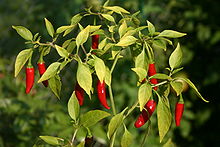Welsh Luing Beef Casserole
Cooked with Dark Side of the Moose Bitter, Denbigh Plumbs and Welsh Leeks
 |
| Welsh Luing Beef Casserole |
I don't think you will get a more Welsh dish than this one. I have used Braising Luing Beef Steak from my friends farm which is located high in the Welsh Hills, a dark bitter from the Purple Moose Brewery based in Porthmadog in West Wales, Denbigh Plumbs which is specific to the area where I live and finally some homegrown Welsh Leeks.
I hadn't seen Iwan and Eleanor for a few years until I bumped into them in a local food festival. We got chatting and they showed me the beef they had for sale which comes from their own herd of Welsh Luing Beef. I use to work on a farm many moons ago near to where they now live (Hafod y Maidd, Glasfryn near to Corwen) and you have to be a hardy sole to live and work there all year round. Even in the summer it never really gets warm. This is why they have opted for rearing Luing cattle on their farm. This breed is a cross between a hardy native breed of Shorthorn cross Highland cow, originally from the Isle of Luing in Scotland. They explained to me that these home bred animals graze on the mountain heather and grass which results in a delicious, sweet tasting meat with natural marbling. (To contact Iwan and Eleanor Davies you can email them INFO@WELSHLUINGBEEF.CO.UK or visit their website
http://www.welshluingbeef.co.uk/ )
I was looking for a good quality braising steak to go into a recipe I was developing and after their explanation I was sold and took a kilo of their finest cut.
The recipe I was looking to develop would incorporates local plumbs which are specific to the area where I live. Each year, around October time, there is even a festival specifically organised to celebrate the Denbigh Plumb. This plumb is sweet and juicy and would be ideal to use in a casserole to give it some sweetness to counteract the bitterness of the ale I was using but also give the dish a bit of depth.
The dark bitter used for this dish comes from one of my favorite breweries, Purple Moose, and they have a range of ales from a light ale to a dark bitter.
http://www.purplemoose.co.uk/
 |
| Ingredients for the casserole |
Ingredients Serves 4
1Kg Diced Luing Beef
500ml Dark Side of the Moose Bitter
3 Denbigh Plumbs diced
2 Carrots diced
1 medium size onion chopped and diced
3 medium size Welsh Leeks diced
1 beef stock cube crumbled
1 tsp pepper corns
2 bay leaves
1/2 teaspoon Anglesey Sea Salt
11/2 tsp Herbs de Provence
1 tbs flour
2 tbs Welsh Rapeseed Oil (BlodynAur)
 |
| Diced Luing Beef |
Dice the beef and vegetables.
 |
| Diced Carrots and Welsh Leeks |
Pour 1tbs of rapeseed oil into a large casserole pan and add the onions. Fry gently for about 4 to 5 minutes. Remove the onions and set aside on a plate.
Add the remaining oil and beef in small batches and brown them off in the pan.
Add all the beef and onions back to the pan and add the flour, stir until the flour has disappeared.
Now add all the remaining vegetables.
Pour in the bitter and it should froth up slightly.
Add the remaining ingredients and a bit of water until the beef and vegetables are covered.
Place a lid on the dish and place in a pre-heated oven at 160C and allow to cook slowly for 3 to 4 hours. Top up with water if required.
As I had time to spare until the dish was ready I took the family up a local mountain called Siabod.
By the time we had been up and down this mountain we were ready for some tasty melt in the mouth beef casserole and this dish did not let us down. The beef was superb and there was an excellent balance between the slightly bitter sweet taste from the ale and plumbs. This dish would be excellent with either mash or jacket potatoes, enjoy.
 |
| Casserole ready to serve |







































